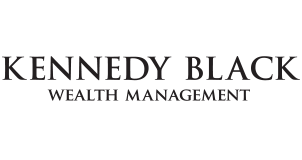Pension Auto-Enrolment (and NEST) – what it means for employers
In what could be the most revolutionary changes to pension legislation in decades, the Department of Work and Pensions (“DWP”) has recently published “Making Automatic Enrolment Work” (October 2010), a review into two new proposals: Auto-enrolment and NEST (short for “National Employment Savings Trust”). For employers, the implications are significant so here is a summary of what has been proposed and what it means.
Firstly, from a policy point of view, the proposed changes should be commended. I believe that the government is entirely right to encourage retirement planning through automatically enrolling employees into an appropriate investment vehicle. In its report, the DWP estimates that 4-8 million people will start saving for a pension for the first time if forced to enrol through work.
Here is a summary of the proposed changes, in as clear English as I could muster:
- Employers will be required to enrol their employees in a qualifying pension scheme. If the employer doesn’t already offer one, they must put one in place or use a new default scheme called NEST. The employer must contribute towards this pension.
- The new rules, once fully in force, will require a minimum total contribution of 8% of salary, of which at least 3% must come from the employer. If an employer contributes 3%, the employee can contribute 4% with tax relief adding a further 1%. Employers can contribute more than 3% if they wish;
- The rules will apply to all companies; there are no exemptions for small companies;
- All employees between the age of 22 and the State Retirement Age (which rises to 66 from 2020) earning over £7,475 per annum (the level at which income tax becomes payable from next year) must be automatically enrolled into a suitable pension scheme, unless they choose to opt out;
- Contributions will be payable on earnings in excess of the National Insurance threshold (currently £5,715) up to a cap of £38,185 at 2010/11 earnings levels;
- Employees who opt out will be automatically re-enrolled every three years (so will actively have to opt out again if they wish to remain opted out);
- If an employee opts out, the employer will not be permitted to reimburse the employee for the benefits being surrendered, since employers will not be allowed to incentivise employees to opt out;
- The new rules will begin on 1 October 2012, initially applying to the largest companies only – with smaller employers being phased in over a four year period depending on size;
- The level of contributions will also be phased in: from October 2012 to October 2016, the employee will only be required to contribute 1% and the employer 1%. From October 2016 to October 2017, the employee will be required to contribute 3% (including tax relief) and the employer 2%. From October 2017 onwards, the rules will apply in full: the employee will be required to contribute 5% and the employer 3%;
- Employers that do not provide a pension can set one up or can sign up to the National Employee Savings Trust (“NEST”). However, the details of NEST remain unclear, and a large part of the success of the proposals will boil down to how effective NEST really is, particularly for small companies.
What does all this mean for you as an employer?
Firstly, if you already provide a pension for your employees into which both you and they contribute, then broadly speaking nothing much will change. The pension on offer must be as good as or better than NEST, although at this stage it is difficult to judge how high that bar will be.
If you currently provide a pension but do not contribute, then you must get ready to start contributing. Equally, employees who are currently not contributing (or only contributing small amounts) will need to get ready to start making higher contributions or opt out.
If you do not provide a pension, then you either need to put one in place (as good as or better than NEST) or sign up to NEST. You also need to get ready to start contributing and managing the administrative burden that this system will create.
There are a number of question marks, most noticeably about what form NEST will take and whether it really will serve small businesses (those that require it the most) in the manner required. Furthermore, it is feared that employers who currently make generous contributions may use this as an opportunity to “level down” their contributions to the bare minimum. It is also difficult to anticipate how many people will opt out. Some have speculated that low earners may be more inclined to opt out, particularly if they haven’t been contributing previously and are then being asked to contribute 4% of their pay when making ends meet is hard enough as it is.
At this stage, employers need to educate themselves about what is being introduced and when (I hope this article is a good start) and to prepare themselves for their new responsibilities – both in terms of new pension contributions as well as the administrative responsibilities that will apply. However, be aware that at this stage the above are simply proposals – much is likely to change between now and 2012.





Sorry, the comment form is closed at this time.